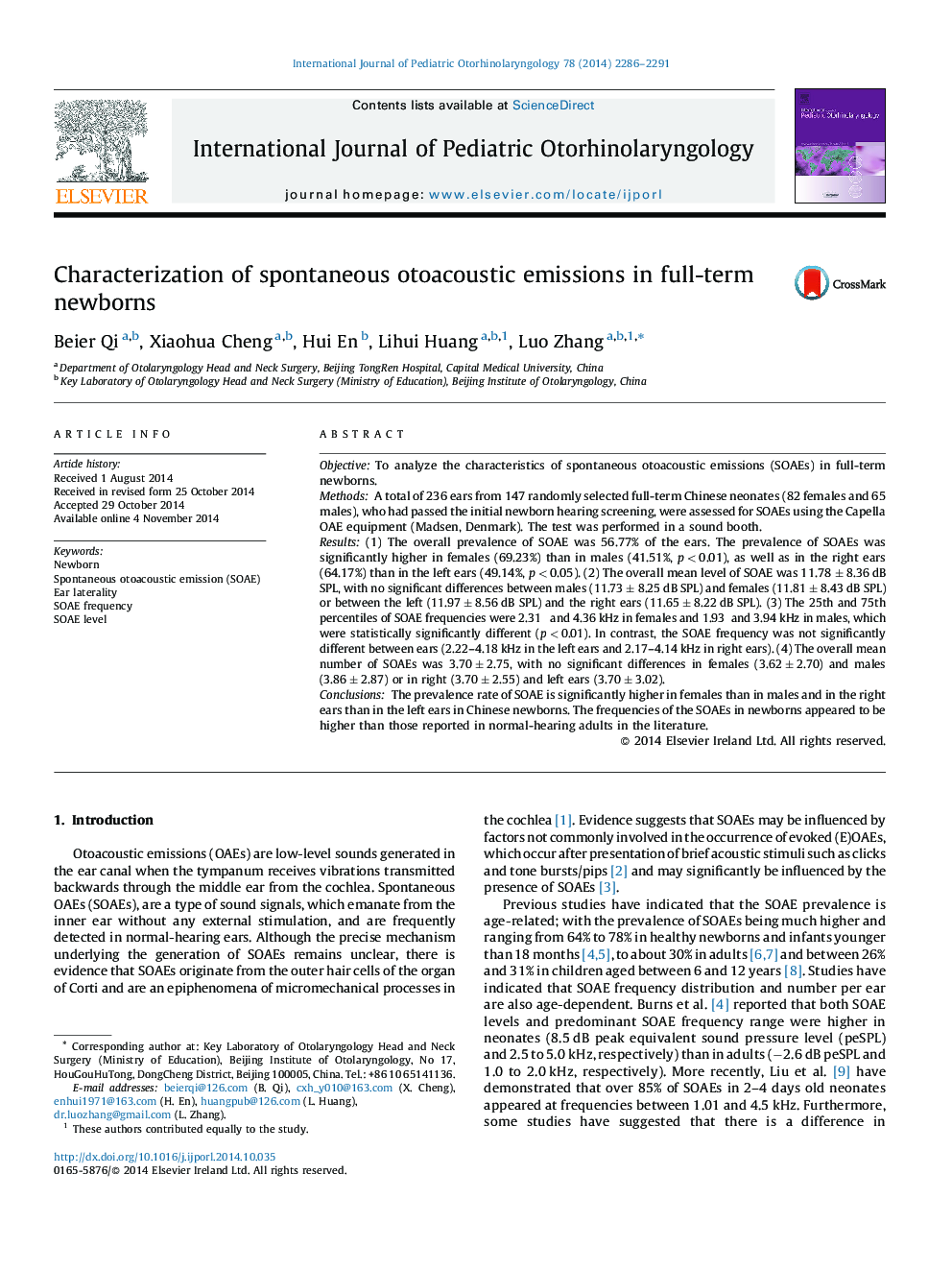| Article ID | Journal | Published Year | Pages | File Type |
|---|---|---|---|---|
| 4111825 | International Journal of Pediatric Otorhinolaryngology | 2014 | 6 Pages |
ObjectiveTo analyze the characteristics of spontaneous otoacoustic emissions (SOAEs) in full-term newborns.MethodsA total of 236 ears from 147 randomly selected full-term Chinese neonates (82 females and 65 males), who had passed the initial newborn hearing screening, were assessed for SOAEs using the Capella OAE equipment (Madsen, Denmark). The test was performed in a sound booth.Results(1) The overall prevalence of SOAE was 56.77% of the ears. The prevalence of SOAEs was significantly higher in females (69.23%) than in males (41.51%, p < 0.01), as well as in the right ears (64.17%) than in the left ears (49.14%, p < 0.05). (2) The overall mean level of SOAE was 11.78 ± 8.36 dB SPL, with no significant differences between males (11.73 ± 8.25 dB SPL) and females (11.81 ± 8.43 dB SPL) or between the left (11.97 ± 8.56 dB SPL) and the right ears (11.65 ± 8.22 dB SPL). (3) The 25th and 75th percentiles of SOAE frequencies were 2.31 and 4.36 kHz in females and 1.93 and 3.94 kHz in males, which were statistically significantly different (p < 0.01). In contrast, the SOAE frequency was not significantly different between ears (2.22–4.18 kHz in the left ears and 2.17–4.14 kHz in right ears). (4) The overall mean number of SOAEs was 3.70 ± 2.75, with no significant differences in females (3.62 ± 2.70) and males (3.86 ± 2.87) or in right (3.70 ± 2.55) and left ears (3.70 ± 3.02).ConclusionsThe prevalence rate of SOAE is significantly higher in females than in males and in the right ears than in the left ears in Chinese newborns. The frequencies of the SOAEs in newborns appeared to be higher than those reported in normal-hearing adults in the literature.
